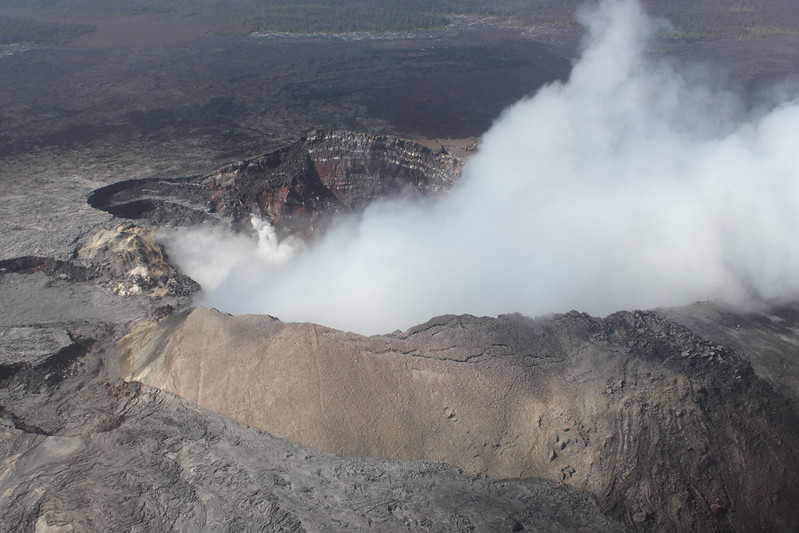Today in 1935, a military mission you sure don’t see every day: American planes carried out a series of bombing runs to stop a volcano.
It may sound counterintuitive to hear that somebody thought that the best way to deal with a volcano spewing superhot lava and gas out into the surrounding area was to drop bombs on it!?!
But the story is a little more complicated than it sounds.
When Hawaii’s Mauna Loa erupted in November 1935, it started sending lava toward the city of Hilo and the river that supplied its water.
The lava was moving fast, about a mile a day.
To protect the city, a volcano scientist suggested that the military try to divert the lava flow moving toward Hilo by bombing the lava channels.
If it worked, they’d essentially create new lava channels, which would get the lava moving somewhere else besides the place where people lived and toward their fresh water supply.
The officer who planned the mission was Lieutenant Colonel George S. Patton, who would later become a household name in the US for his service in World War II, and for the biopic about him starring George C. Scott.
The US Army Air Corps sent ten bombers from their base in Oahu to Mauna Loa.
They dropped 20 bombs, each of which contained 300 pounds of TNT.
And while that may sound like a lot, when they fell, they created craters that quickly filled up with molten rock.
The bombs that hit their target didn’t stop the lava flow.
And only five of the 20 bombs ended up hitting their targets anyway.
Some of the officials involved in the campaign looked on the bright side, figuring that maybe the bombs slowed the lava down a little.
They wanted to continue the campaign with some precision dynamite on the ground rather than another set of bombing runs.
But before that could happen, the lava flow began to slow, and Hilo was safe.
So it wasn’t the most successful mission ever.
And yet, in 1942, during another eruption of Mauna Loa, the military tried essentially the same strategy.
Once again, bombing the volcano didn’t really accomplish the goal.
So if you’re a bomber pilot and you hear about a volcano that needs to be redirected… you may actually be needed elsewhere.
We all make mistakes, so I mention this not to pick on anyone but just because it’s fascinating.
This week in 2015, Vogue Magazine published the following correction:
“In the September profile of Chelsea Clinton, ‘Waiting in the Wings’ by Jonathan Van Meter, Dan Baer was mistakenly identified as an interior designer. He is deputy assistant secretary for the Bureau of Democracy, Human Rights and Labor at the U.S. Department of State.”
27 December 1935 (This Day In Aviation)
Miscues That Made News (Robert Rector on Blogspot)

